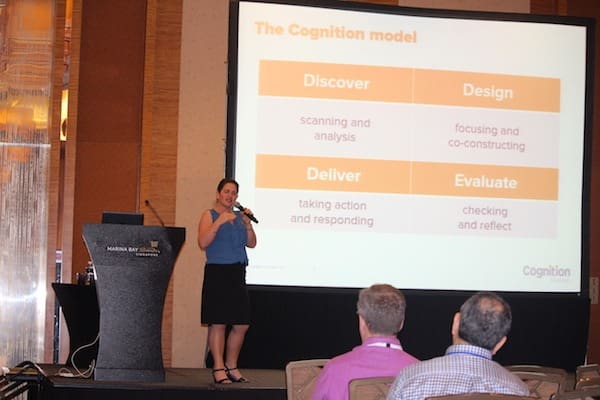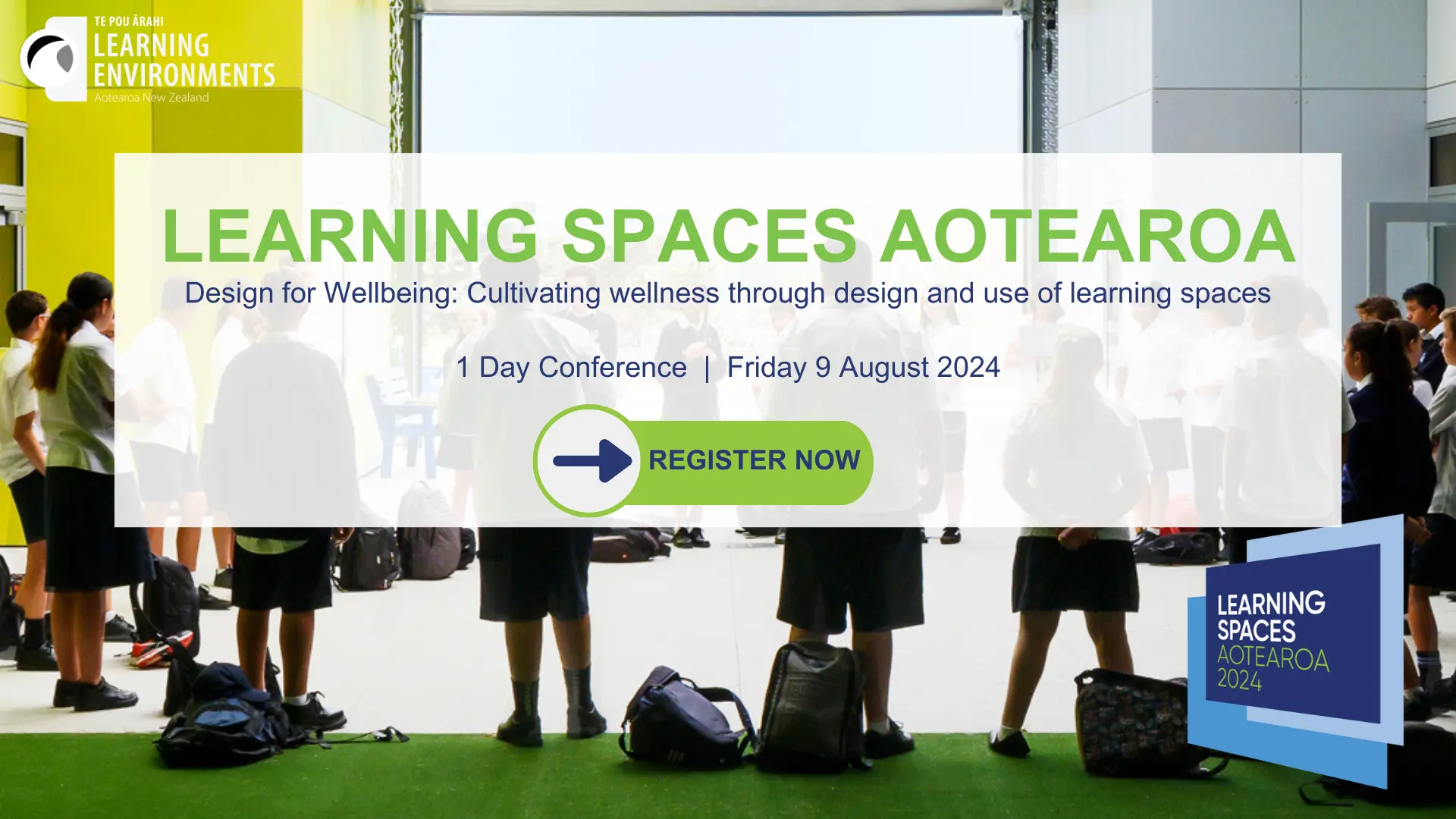Continuing the eXperience Asia Conversation
28 Aug 2018
Lauren Costanzo and Tom Daniel attended eXperience Asia as the winners of the Victorian Chapter's emerging educators conference scholarship. They presented their Singapore experiences at a Pub Chat in Melbourne on 25 July 2017.
For both those that did and didn’t attend the conference, their talks were an insightful perspective on the event.
At Frankston High School, Lauren Costanzo is co-leading changes to learning spaces and pedagogical practices. The creation of multi-modal environments at the school has led teachers to incorporate more creative, collaborative, and independent teaching practices. By attending the conference, Lauren gained the following insight into the relationship between teaching and design:
The eXperience Asia Singapore Conference provided attendees with the opportunity to hear from leading voices in education space design and pedagogical practice. Change was the unifying message from many of the presenters. The world we live in is evolving. As educators and designers, we need to transform our perspectives on design and practice to best prepare students for the future of learning and work.
This was reiterated in Ayesha Khanna’s presentation on Day Three, when she outlined the World Economic Forum’s Top 10 skills by 2020. Notably, skills such as arithmetic and grammar were not on the list, yet Twenty-First Century soft skills, such as complex problem solving, critical and creative thinking, and coordinating with others were. Her question, “how many universities and schools upgrade their curriculum at the same rate that innovation happens?” reinforced the message that today’s schools need to make these skills a priority in order to meet tomorrow’s needs.


Ayesha Khanna (left), Jacque Allen (right) at eXperience Asia
This was consolidated in an earlier presentation by Jacque Allen, whose session focused on the change management required to upgrade schools learning spaces, curriculum, and pedagogy. In her presentation, she specified that skills, incentives, resources, and an action plan were just as important as having a strong and unified vision for change.
Sugata Mitra’s presentation on the final day of the Conference provided attendees with a model of what this change could look like in schools. His ‘School in the Cloud’ challenged traditional education models through an approach coined SOLE (Self Organised Learning Environments). His philosophy is to ask students questions, and then give them group time to access the internet and come up with a solution. This challenges traditional notions about the classroom. A model such as SOLE diverges from a ‘factory model’ and teacher centred educational approach. It presents an opportunity for architects and educators to design classrooms that are student centred and best facilitate group and inquiry based learning.

Sugata Mitra
Models of what these spaces could look like were shared with attendees on the many site tours across Singapore. The Hive at Nanyung Technological University (NTU) is one such example. Since 2010, NTU has converted front-facing tutorial rooms to collaborative, technology-rich learning spaces. The Hive blurred the boundaries between formal and informal learning spaces. The circular rooms meant there was no fixed position for the teacher as an authoritative figure.


The Hive exterior (left), SMU's student hang-out space (right)
This was consistent throughout many of the learning environments in Singapore, such as Singapore Management University. At SMU, they have moved from a teacher-centred paradigm to a student-centred model. Spaces have been designed for students to ‘hang out’ whilst learning. The message throughout the conference was consistent; space design and pedagogical practice need to be aligned from design through implementation in order to provide an education that will best prepare our students for the changing world.
Thank you once again to the Victorian Chapter of Learning Environments Australasia for providing me with a scholarship to attend this innovative conference, as well as the many world-class presenters who shared their stories and inspired us all.
Tom Daniel is a leading teacher at Balwyn Primary School. As an eLearning advocate, he’s led coding, programming, and other technological initiatives at the school. Tom’s interest in attending the conference was to learn more about the convergence of school design and technology. By attending the conference, Tom learned more about the future of education and the effect of contemporary learning spaces.
As a first timer, not only in Singapore, but also to Learning Environments Australasia, this experience was not only new - it was very inspirational.
Singapore is not only a clear market innovator in terms of impressive architectural feats but their educational system is world renowned. There are few places positioned to offer a feast equally beneficial to educationalists, architects and planners.
The speakers shed light on the importance of learning space design and modern pedagogy. The Permanent Secretary of Education, Lai Fund Chan, along with many of her colleagues in various educational settings, explained the progress they are making in learning space and instructional design.
Megan Fallone and Bunker Roy, the founders of the Barefoot College in India, and Mechai Viravaidya, principal of the Bamboo School in Thailand, stressed the importance of relevant and practical education being offered to the communities they serve.


Meagan Fallone (left), Bunker Roy (right)
Although discussion is important, stepping foot into physical educational settings often offers more insight. Our tour of University Town, as part of National University of Singapore (NUS), offered an unparalleled opportunity to learn about design choice and how learning spaces were used. With over 1,700 residents living in the campus, it forms an almost complete, sustainable city and learning hub in a very small footprint.

The U-Town tour
The final day ended with spectacular and sobering presentations from two speakers. Sugata Mitra reminded us of the importance in letting students learn and the necessary transition from being teachers to facilitators. Ayesha Khanna looked at the increasing automation in our world and the future of the workforce. She made a clear point that work places are continuing to shift significantly to being more flexible with increasing technology use. The thought of 47% of current jobs being automated within the next two decades definitely left us with food for thought about the skills we teach and the spaces we need.
For me, the implications were very clear. There is a great need for the conversation between educationalists, who use these new spaces, and the people who are planning and creating them to continue.
I am extremely grateful to have had opportunity to attend the annual conference and look forward to being involved with Learning Environments Australasia in the future.
The Victorian Chapter of Learning Environments Australasia is proud to have sponsored Lauren Costanzo and Tom Daniel’s journey to the 2017 eXperience Asia Conference.
Though strategic linkages with teachers such as them, we can fulfil our mission to innovate and improve the places where people learn. This can only happen if educators, researchers, policy makers, and designers continue the conversation about what makes great learning spaces.
Article: Lauren Costanzo, Tom Daniel. Additional text by Wayne Hay.
Photos: Bella Bower, Marian Mahat, Troy Glover, Raechel French, Lauren Constanzo.
Explore more eXperience Asia insights with WA Chapter Chair Dani Martin's conference highlights



